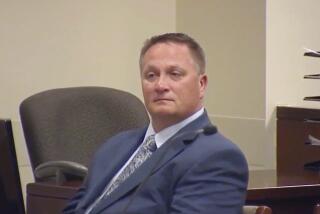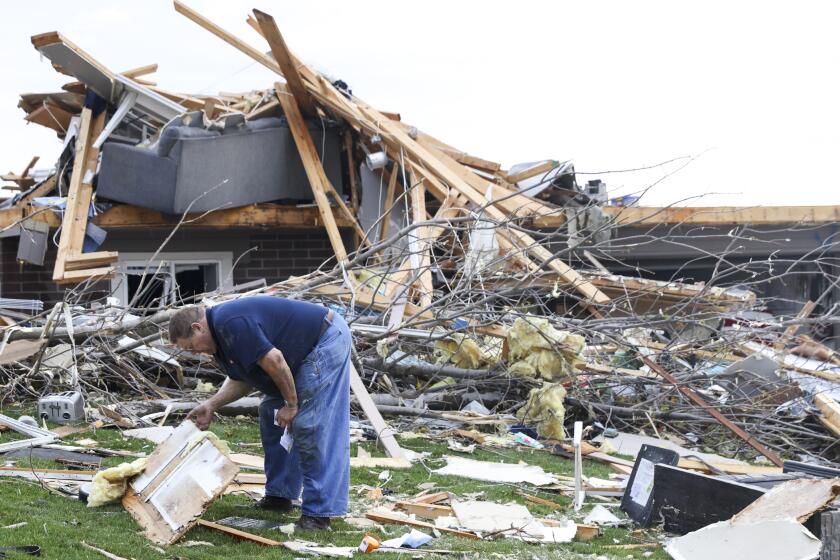Keeping our allies on our side
‘There is only one thing worse than fighting with allies,” observed Winston Churchill in 1945, “and that is fighting without them.” It’s a truth worth recalling as the Obama administration nears crucial decisions on Afghanistan.
American commentators often shortchange allied efforts in Afghanistan, ignoring the facts and insulting our friends. The European allies and Canada provide about half of the 73,000 troops in the NATO-led International Security Assistance Force, or ISAF, and they account for nearly 40% of Western combat deaths since 2001. Estonia, Denmark, Canada, Britain, the Netherlands and Latvia have lost more soldiers per capita than has the United States.
Bravery is not an American monopoly. Most allies report many soldiers volunteering to return to Afghanistan despite the increased violence. A Canadian officer who lost his leg in a roadside bomb attack in 2007 recently returned to Kandahar, in his words, “to do good.” Dutch soldiers engaged in the dangerous Uruzgan province since 2006 have none of the uncertainty about their mission that marked those who were accused of failing to stop the 1995 Srebrenica massacre in Bosnia.
True, NATO must cope with “caveats” -- restrictions imposed by some allies on how and where their forces can be employed in Afghanistan. For example, most of the nearly 4,400 German troops are effectively barred by their parliament from operating outside the relatively safe northern region, and Turkey allows its 720-man contingent to operate only in Kabul. Some allied troops are prohibited from conducting nighttime or “offensive” missions. France’s military chief properly calls caveats a “poison for multinational operations,” and his British counterpart insists other allies take a larger role in combat.
NATO tightly guards the detailed list of which ISAF contributors impose which caveats, but there are signs of progress. In 2006, Marine Gen. Jim Jones, then NATO’s supreme allied commander, complained that 102 caveats were hobbling the ISAF’s on-scene commanders. Last June, the new commander, U.S. Navy Adm. James Stavridis, told a Senate committee that although 69 caveats remained in force, 18 of the 42 ISAF contributors were “caveat free.” And over the last few months, several European nations that publicly emphasize their peacekeeping role have shifted with little fanfare to more aggressive patrolling and have engaged in sharp firefights with insurgents.
Despite some wavering, the allies are not rushing for the exits. Over the last few weeks, several pledged to maintain or, in a few cases, increase their boots on the ground. Prime Minister Gordon Brown recently agreed to add an additional 500 soldiers to the 9,000-member British force -- conditioned, in part, on other ISAF partners “bearing their fair share.” In total, a few thousand more European troops might be added over the next year. Most of these soldiers (plus French gendarmes and members of the Italian Carabinieri) will serve as mentors for Afghan security forces, reinforcing a “line of operation” that U.S. officials see as key to reversing Taliban momentum and permitting a gradual reduction in NATO’s role.
Numbers don’t tell the whole story. French President Nicolas Sarkozy recently announced, perhaps imprudently, that he “won’t send an additional soldier” to the nearly 3,100-strong French contingent in the ISAF. Still, the French are boosting the combat punch of their 600-man battalion in the volatile eastern region, which is due to be reinforced by larger French units now based in Kabul.
Of course European allies should be encouraged to do more militarily. But excessive American finger-pointing, as NATO Secretary-General Anders Fogh Rasmussen warns, could produce the opposite effect because most allied governments are more convinced than their publics of the dangers posed by unchecked violent extremists in Afghanistan and Pakistan.
Moreover, military power alone will not suffice. European countries and Canada provide critical civilian expertise and funding for reconstruction and development, bilaterally and through the European Union. The EU’s portion -- about 1.5 billion Euros since 2002 -- is relatively modest, however; given its unparalleled civilian capacities, the EU can and should do more to help Afghans retake control of their future.
The 28 NATO heads of state and government (of which 21 are also EU members) endorsed this “comprehensive approach” to integrating civilian and military efforts at their April 2008 and April 2009 summits. Indeed, the leaked assessment by the ISAF commander, Army Gen. Stanley A. McChrystal, reads like a playbook for putting that approach into action. Meeting last week in Bratislava, Slovakia, NATO defense ministers offered broad support for McChrystal’s assessment, although they did not discuss in detail the resource implications of his recommended way forward.
Still, to mobilize the needed international support, Washington must remember a basic rule of alliance management: No foreign political leader can persuade his or her parliament or public to rubber-stamp a strategy “made in the U.S.A.” NATO allies want President Obama to identify a realistic game plan to show progress over the next 12 to 18 months, but they don’t want that strategy decided without their input.
Thus, the administration’s consultations with its allies -- in Washington, in NATO’s political and military councils and in allied capitals -- must be continuous and, above all, credible. This requires a sincere willingness to listen -- as Defense Secretary Robert M. Gates, to his credit, demonstrated in Bratislava -- and not just instruct. A tough task, to be sure, but as Churchill warned, the alternative would be far worse.
More to Read
Start your day right
Sign up for Essential California for news, features and recommendations from the L.A. Times and beyond in your inbox six days a week.
You may occasionally receive promotional content from the Los Angeles Times.






